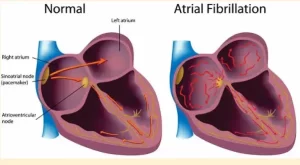What Is Diabetes and How Does It Affect Our Lives?
By Ahmet Ergin, MD, CCE, ECNU, Institute of Endocrinology, Panama City & Destin, FL, http://www.iedhh.com
Translated by: Lessie Correa
Diabetes is a disease state where the body’s blood glucose control mechanisms fail in one or multiple ways. First of all, let’s understand the reasons behind diabetes.
When the pancreas is under attack by its own immune system, insulin deficiency develops. When more than 90% of the pancreas is non-functional, diabetes type 1 occurs. Patients will have minimal or no insulin produced in their bodies. But type 2 diabetes is much different. There are eight different defects that occur in the process of developing diabetes. Type 2 diabetes begins with insulin resistance. Insulin resistance can start in a variety of ways, but the most common reason for insulin resistance is excessive weight gain. Weight gain occurs as a result of fat accumulation in fat cells. Those fat cells release inflammatory signals and fatty acids that circulate within the blood system. As a result, most insulin resistant individuals complain of fatigue and tiredness. Fatty acids also start to accumulate within the liver causing fatty liver. Inflammatory signals, as well as fatty acids, create a resistance to insulin action by interfering insulin receptors. As a result, insulin resistant individuals will need to secrete more insulin to overcome the resistance that also causes fatigue in patients. All of these factors create a syndrome called metabolic syndrome. The stage after metabolic syndrome is diabetes.
At Institute of Endocrinology we highly recommend overweight individuals to go through a screening for metabolic syndrome and start a treatment process to prevent the progression to diabetes. In fact, most large vessel complications such as heart attacks and strokes happen in metabolic syndrome stage, before diabetes develops. Once diabetes develops, patients are then at risk of small vessel damage which can lead to blindness, kidney failure and neuropathy. Each 1% increase above 7% in your a1c increases your risk of complications by 30%. So, someone with 9% A1c has a 60% risk of having complications.
There are multiple defects in the development of diabetes. It is like a domino effect, one triggers the next. The first two, as already discussed, include insulin resistance in the liver, muscle, and fat along with lack of adequate insulin production to meet the demand from these tissues. Metformin and pioglitazone are drugs that are designed to improve insulin resistance in type 2 diabetic patients.
What other defects are there? One of the most important regulators of insulin are GLP-1 hormones which are secreted from the intestinal system to alert the pancreas about the presence of food and carbs. The pancreas immediately responds to this intestinal hormone and creates a big bolus of insulin to help glucose enter cells. In type 2 diabetics, GLP-1 is produced less. At Institute of Endocrinology we commonly treat our patients with GLP-1 analogs to help overcome this defect so the pancreas can secrete the insulin needed after eating.
The next important defect in diabetes is an increased threshold for kidneys to reabsorb glucose. Normally, 180 grams of glucose is filtered through the kidneys and all of it is reabsorbed into the system via SGLT-2 receptors. Normal kidneys cannot handle blood glucose that exceeds 180 mg/dl resulting in excess unabsorbed glucose to be dumped into the urine. This is a protective mechanism of the body to prevent blood sugar from increasing to more than 180 mg/dl in the blood. In diabetics however, this system is broken. Type 2 diabetics do not excrete glucose until blood glucose reaches 220. As a result, they maintain constant high glucose levels in blood. There is a class of diabetes drugs called SGLT-2 inhibitors that block the receptors that reabsorb the glucose. As a result, patients excrete up to 70 grams of sugar in their urine daily. This effect of the drug causes excessive amounts of glucose in the urine that can lead to urinary tract infections in some patients. Since glucose attracts water, the amount of urination may increase. If a patient does not properly rehydrate, it can lead to dehydration.
Of course, one of the best ways to control blood sugar is insulin which is what diabetics are deficient of. Today insulin drugs on the market are almost duplicate of human insulin, that’s why they are called biologics. They create the same effect as our own insulin. For example, basal insulin helps control the liver’s glucose production when metformin alone is not enough.
Early insulin treatment, contrary to common belief, is beneficial. The delay in insulin administration can cause uncontrolled diabetes and complications. We have type 1 diabetics who have been using insulin for decades, and these patients, as long as their blood glucose is under control, never develop complications due to their diabetes. There are many different types of insulin however and this will be the subject of another article.
We empower our patients to take control of their diabetes through education, selection of appropriate drugs—individualized for each patient—and timely follow-up on the results of actions taken.
Please visit us at Institute of Endocrinology for a complete evaluation and treatment of your diabetes. Take charge and say “no” to the complications of diabetes!


